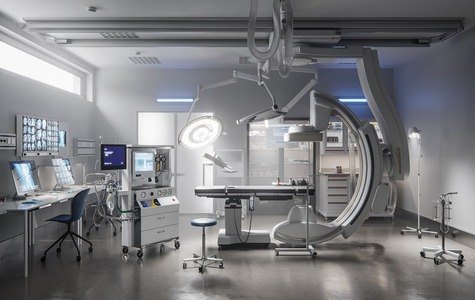- Medical Devices
- Wednesday, 09 Oct 2019
Government to aid Confocal microscopy research at academic levels
Confocal microscopy is having huge application in the field of biology research like live cell imaging, neuroscience studies and others. Confocal microscopy allows the analysis of fluorescent labelled thick specimens without physical sectioning, more color differentiation possible as images are viewed on the system rather than by eye, three dimensional reconstruction of the specimen is possible also improved resolution. For instance, in 2017, researchers of the State University of New York Downstate Medical Center (Brooklyn, NY) have found that hypoxia (lack of oxygen) because of abnormal blood flow is responsible for as much as half of seizure-related neuronal degeneration cases in epilepsy. A confocal microscopy technique enabled the research team to detect a cascade of abnormal capillary vasodynamics in the brain.
Considering the huge application of confocal microscopy in the field of bioimaging the player such as Leica Microsystem launched the first imaging center San Francisco US in 2018. The aim of opening this imaging center was to boost academic research for life science. In this scientist from life science were given access to state-of-the-art microscopy systems for research purpose.
Europe is the second largest geographic market and is expected to be the second most significant revenue contributor throughout the forecast period. The region has witnessed several technological advancements in the field of healthcare due to the availability of better healthcare facilities. The growth is driven by factors such as the prevalence of chronic disorders such as cancer, gastrointestinal disorders, and eye disorders.
The government is funding to boost basic research at academic levels. This will aid in the development of scientists interests in the field of research. Research in the field of biomedical imaging, stem cell research, genome editing and others are receiving government funding. These studies are carried out in collaboration between the two countries. For instance, in 2017 Department of Biotechnology, India to develop a guideline for stem cell and regenerative medicine which includes basic biology of all adult stem cells, early and late translational research, developing gene editing technology for possible therapeutic applications. Indo-Japan collaboration is formed to support the stem cell and regenerative medicine research. Under this Indian researches will be trained at the Center for iPSc research and applications (CiRA) at Kyoto University, Japan.
In Canada's recent budget announcement, the government decided to spend US $4 billion on basic research. As part of the 2019 budget these funding is given to The Stem Cell Network, a non-profit organization in Ottawa active into clinical applications research will receive US $14 million over three years. Also, Genome Canada, a non-profit organization in Ottawa which supports genomic research, will get about US $77 million over five years.
The global confocal microscopes market expected to be US$ 929.03 Mn in 2018 and is predicted to grow at a CAGR of 3.5% during the forecast period 2019 - 2027, to reach US$ 1,248.86 Mn by 2027.
The global confocal microscopes market by type was led by multi-photon microscopy segment. In 2018, the segment of held the largest market share in the confocal microscopes market, by type. The segment is also expected to witness growth at a significant rate during the forecast period as it combines advanced optical systems of laser scanning microscopy with extended wavelength multiphoton fluorescence excitation to provide high-resolution and three-dimensional images of specimens that have been tagged with fluorophores.
Related Industry Updates
Asia-Pacific Contract Logistics Market Impact of COVID-19 Outbreak on Business Opportunities and Future Scope till 2027
Oct 01, 2020
Pancreatic Cancer Therapy Market 2021 Production, Revenue, Industry Market Share, Regional Growth Analysis, Upcoming Trends, Key Manufacturers, Development Analysis Research Report by 2025
May 12, 2021
Middle East and Africa Frozen Potato Market to Witness an Outstanding Growth During 2020 With Top Key Players Bart’s Potato Company,Aviko B.V.,Agristo NV,Lamb Weston Holdings, Inc.,McCain Foods Limited,Greenyard,The Kraft Heinz Company
Nov 24, 2020
Teleradiology Services Market is expected to reach US$ 8,313.27 million by 2030
Jan 10, 2024
Lab Automation Market Will Escalate Rapidly in the Near Future
Feb 24, 2021
Rapid Test Kits Market is expected to reach US$ 26.63 billion by 2030
Feb 09, 2024
Global Eye Health Supplements Market 2020-2027 Comprehensive Study By Key Players Herbalife Nutrition Ltd., The Nature's Bounty Co., AMWAY, Pfizer Inc., Alcon Inc., Bausch Health
Mar 18, 2021
